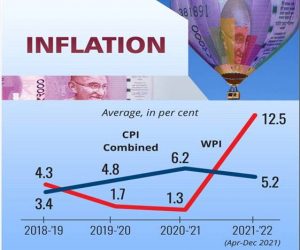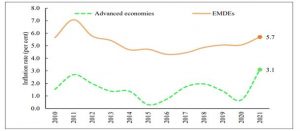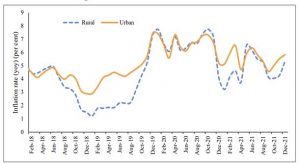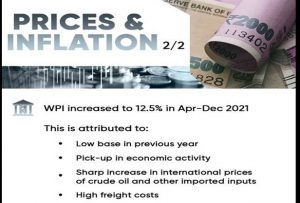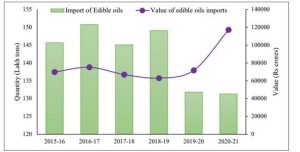DAILY CURRENT AFFAIRS (MARCH 25, 2022)
THE HEALTH AND SOCIAL ISSUES
1. INDIA TO BE TB FREE BY 2025: INDIA TB REPORT 2022
THE CONTEXT: On World Tuberculosis Day, Union Health Ministry released India TB Report 2022 and it’s reaffirmed the government’s commitment to making India tuberculosis–free by 2025 and this will be achieved by ensuring access to quality healthcare and advanced treatment.
THE EXPLANATION:
- According to the report, 19% increase was witnessed in 2021 from the previous year in TB patients’ notification. The number of incident TB patients (new and relapse) notified during 2021 was 19,33,381 against the 16,28,161 in 2020.
- In terms of DS-TB (Drug sensitive) treatment performance, in 2021, among 21,35,830 patients diagnosed, 20,30,509 (95%) patients were put on treatment. While the dis aggregated treatment success rate of patients notified from the public and private sectors are 83% and 82%, respectively.
- Regarding DR-TB (Drug Resistant) treatment performance, in 2021, 48,232 MDR/RR-TB patients were diagnosed and 43,380 (90%) were put on treatment.
- In 2021, the data was captured for 72% of total notified patients, out of which 7% admitted to alcohol usage. Similarly, out of the 74% of the known tobacco usage among all TB patients, 12% of TB patients were reported to be tobacco users. Among those screened, 30% were linked to tobacco cessation services.
- In India, childhood Tuberculosis remains a staggering problem, contributing to approximately 31% of the global burden. Over the last decade, consistently, children constitute 6-7% of all the patients treated under NTEP annually, pointing to a gap of 4-5% in total notification against the estimated incidence. To that end, intersectoral coordination is critical for ensuring wide-reach of the programme to remedy this gap.
TB Prevention
‘Prevent’ is one of the four critical pillars (Detect – Treat – Prevent – Build) of India’s National Strategic Plan for Elimination of Tuberculosis (NSP 2017-25) that focuses on preventing the emergence of TB in a vulnerable population. The program has offered TB Preventive Therapy (TPT) for more than a decade, albeit limitedly to children below the age of six years and People living with HIV/AIDS (PLHIV) for the past few years.
| World Tuberculosis Day-24 March
· Every year March 24 commemorates World TB Day to raise public awareness about the devastating health, social and economic consequences of tuberculosis (TB) and to step up efforts to end the global TB epidemic. · The date marks the day in 1882 when Dr. Robert Koch announced that he had discovered the bacterium (Mycobacterium tuberculosis) that causes TB, which opened the way towards diagnosing and curing this disease. |
Value Addition:
Visions & Goals of the National Strategic Plan 2017 – 2025
- The Vision is of a TB free India with zero deaths, disease and poverty due to tuberculosis.
- The Goal is to achieve a rapid decline in the burden of TB, mortality and morbidity, while working towards the elimination of TB in India by 2025.
- The requirements for moving towards TB elimination in India have been arranged in four strategic areas of Detect, Treat, Prevent & Build. There is also across all four areas, an overarching theme of the Private Sector. Another overarching theme is that of Key Populations.
Targets
The targets of the National Strategic Plan are set out as consisting of both outcome and impact indicators. There are also four main “thrust” or priority areas in the NSP which are:
- Private sector engagement;
- Plugging the “leak” from the TB care cascade (i.e. people with TB going missing from care);
- Active case finding among key populations;
- People in “high risk” groups, preventing the development of active TB in people with latent TB.
Nikshay Poshan Yojana has been implemented from 01st April 2018, wherein 500 rupees per month is being provided to All TB patients towards nutritional support for the duration of their treatment. Tribal patient travel support, wherein 750 rupees is being provided to all TB patients in tribal notified blocks towards travel support is an ongoing scheme since the twelfth plan.
THE INTERNATIONAL RELATIONS
2. INDIA ABSTAINS ON UNGA VOTES
THE CONTEXT: India abstained on two resolutions at the United Nations General Assembly (UNGA) on related to the humanitarian crisis in Ukraine following the Russian invasion.
THE EXPLANATION:
What are the resolutions?
- The first abstention was on a draft resolution proposed by Ukraine that held Russia responsible for the crisis.
- The second was a procedural vote — on whether the UNGA ought to take up a second resolution, proposed by South Africa, for action at all. This resolution did not mention Russia.
Background:
- The first resolution was adopted with support from 140 countries and the second was not put to vote because it did not have sufficient support.
- The draft version of Ukraine’s resolution named Russia, the UNGA “demands an immediate cessation of the hostilities by the Russian Federation against Ukraine, in particular of any attacks against civilians and civilian objects.”
- The 140 countries that voted in its favour included the U.S. and European Union countries. India was among 38 abstentions, as were China, South Africa and Sri Lanka. Five countries voted against it: Russia, Belarus, North Korea, Syria and Eritrea.
Value Addition:
United Nations General Assembly (UNGA)
- About: Established in 1945 under the Charter of the United Nations, the UN General Assembly occupies a central position as the chief deliberative, policy making and representative organ of the United Nations.
- The UNGA is headed by its President, who is elected for a term of one year.
- Composition: It comprises all 193 Members of the United Nations.
- Mandate: provides a unique forum for multilateral discussion of the full spectrum of international issues covered by the Charter.
- It also plays a significant role in the process of standard-setting and the codification of international law.
THE ECONOMIC DEVELOPMENTS
3. EXPLAINED: WHAT IS THE NATIONAL PHARMACEUTICAL PRICING AUTHORITY’S ROLE IN FIXING DRUG PRICES?
THE CONTEXT: According to the Government sources, for the first time in many years, prices of nearly 800 drugs and medical devices under the National List of Essential Medicines (NLEM) are set to increase by over 10 percent, owing to a sharp rise in the Wholesale Price Index (WPI).
THE EXPLANATION:
- If the National Pharmaceutical Pricing Authority (NPPA) allows a price hike of over 10% in the drugs and devices listed under the National List of Essential Medicines (NLEM) the consumers may have to pay more for medicines and medical devices.
- The escalation which is expected to have an impact on nearly 800 drugs and devices is propelled by the rise in the Wholesale Price Index (WPI). Lobby groups that represent domestic pharmaceutical companies have been engaging with the Central Government to ask it to extend the 10% annual hike to scheduled formulations under price control.
- NELM lists drugs used to treat common conditions such as fever, infection, heart disease, hypertension, skin diseases and anaemia, among others.
- It includes paracetamol and antibiotics such as azithromycin, used to treat bacterial infections, anti-anaemia prescriptions such as folic acid, vitamins and minerals.
- Some drugs used for treating moderately to severely sick COVID-19 patients, steroids like prednisolone, are also included
| What is Essential Medicines List?
As per the World Health Organisation (WHO), Essential Medicines are those that satisfy the priority health care needs of the population. The list is made with consideration to disease prevalence, efficacy, safety and comparative cost-effectiveness of the medicines. Such medicines are intended to be available in adequate amounts, in appropriate dosage forms and strengths with assured quality. They should be available in such a way that an individual or community can afford. The WHO EML is a model list. The decision about which medicines are essential remains a national responsibility based on the country’s disease burden, priority health concerns, affordability concerns etc. Ministry of Health and Family Welfare, Government of India hence prepared and released the first National List of Essential Medicines of India in 1996 consisting of 279 medicines. This list was subsequently revised in 2003, 2011 and 2021. |
About NPPA:
- The National Pharmaceutical Pricing Authority (NPPA) is a government regulatory agency that controls the prices of pharmaceutical drugs in India.
- It was constituted by a Government of India Resolution dated 29th August, 1997 as an attached office of the Department of Pharmaceuticals (DoP), Ministry of Chemicals and Fertilizers as an independent regulator for pricing of drugs and to ensure availability and accessibility of medicines at affordable prices with Headquarter at New Delhi, India.
Functions of NPPA:
| FIXING | · The NPPA fixes the price of drugs on the National List of Essential Medicines (NLEM) under schedule-I of Drug Price Control Orders (DPCO). |
| IMPLEMENTING | · The NPPA is responsible for implementing and enforcing the provisions of the Drugs Price Control Order, 2013 in accordance with the powers delegated to it. |
| MONITORING | · The NPPA monitors the availability of drugs, identifies shortages, if any, and takes remedial steps accordingly. |
| ADVISING | · National Pharmaceutical Pricing Authority (NPPA) also renders advice to the Central Government on changes/revisions in the drug policy. |
| DATA MAINTAINING | · The NPPA also collects/maintains data on production, exports and imports, market share of individual companies, the profitability of companies etc. for bulk drugs and formulations. |
| ASSISTING | · It is also entrusted with rendering assistance to the Central Government in parliamentary matters relating to drug pricing. |
4. FARM INCOME FELL IN FOUR STATES: REPORT BY PARLIAMENTARY PANEL
THE CONTEXT: According to the Parliamentary panel, While National farm income rose 27% between 2015-16 and 2018-19, Jharkhand saw a drop in monthly income by 30%.
THE EXPLANATION:
- The Committee recommended that the Department of Agriculture and Family Welfare “should formulate a Special Team to figure out the reasons for falling farmers’ income in those States and take some course corrective measures so that the doubling of farmers income is not lost sight of.”
- The Doubling Farmers’ Income (DFI) committee had calculated the 2015-16 baseline by extrapolating the National Statistical Organization’s (NSO) survey data from 2012-13, calculating that the national average monthly income of a farm family in that year was ₹8,059. By the time the next NSO survey was conducted in 2018-19, monthly income had risen 27% to ₹10,218.
- In Jharkhand, however, a farm family’s average income fell from ₹7,068 to ₹4,895 over the same period. In Madhya Pradesh, it fell from ₹9,740 to ₹8,339, in Nagaland, from ₹11,428 to ₹9,877, and for Odisha, it dipped marginally from ₹5,274 to ₹5,112.
- The panel also noted that while the Department’s budgetary allocation may have risen in absolute terms, it has consistently declined in percentage terms. In the 2019-20 Budget, announced just before Lok Sabha polls, the department received 4.7% of total allocations. That proportion has dropped every year since, and in 2022-23, the department’s budget accounted for only 3.1% of the total.
Value Addition:
Committee on Doubling of Farmers Income:
The Government constituted an Inter-ministerial Committee (on the recommendation of Ashok Dalwai) in April, 2016 to examine issues relating to “Doubling of Farmers Income” (DFI) and recommend strategies to achieve the same. The Committee submitted its Report to the Government in September, 2018 containing the strategy for doubling of farmers’ income by the year 2022. The DFI strategy as recommended by the Committee include seven sources of income growth viz.,
- improvement in crop productivity.
- improvement in livestock productivity.
- resource use efficiency or savings in the cost of production.
- increase in the cropping intensity.
- diversification towards high value crops; (vi) improvement in real prices received by farmers; and (vii) shift from farm to non-farm occupations.
5. FCRA REGISTRATION EXTENDED
THE CONTEXT: The Ministry of Home Affairs (MHA) extended the validity of FCRA [Foreign Contribution (Regulation) Act] registration of NGOs till June 30, 2022 revising its previous extended deadline of March 31, 2022.
THE EXPLANATION:
The registration of thousands of non-governmental organizations and associations that were up for renewal in October 2021 were stuck and the deadline for the same was December 31.
Value Addition:
Foreign Contribution (Regulation) Act:
It is an act of Parliament enacted in 1976 and amended in 2010. It was to regulate foreign donations and to ensure that such contributions do not adversely affect internal security.
- Coverage: It is applicable to all associations, groups, and NGOs which intend to receive foreign donations.
- Registration: It is mandatory for all such NGOs to register themselves under the FCRA. The registration is initially valid for five years. Further, it can be renewed subsequently if they comply with all norms.
- Registered NGOs can receive foreign contributions for five purposes — social, educational, religious, economic, and cultural. There are 22,591 FCRA registered NGOs.
Foreign Contribution Regulation (Amendment) Rules 2020:
- New rules require any organization that wants to register itself under the FCRA to have existed for at least three years. Further, it should have spent a minimum of Rs. 15 lakh on its core activities during the last three financial years for the benefit of society.
- Office bearers of the NGOs seeking registration under the Foreign Contribution (Regulation) Act must submit a specific commitment letter from the donor. It should indicate the amount of foreign contribution and the purpose for which it is proposed to be given.
- Any NGO or person making an application for obtaining prior permission to receive foreign funds shall have an FCRA Account.
THE PRELIMS PERSPECTIVE
6. IMD LAUNCHES CLIMATE HAZARDS E-BOOK AND VULNERABILITY E-ATLAS
THE CONTEXT: The India Meteorological Department (IMD) launched an e-book, Climate Hazards and Vulnerability Atlas of India- State: Tamil Nadu, as part of the World Meteorological Day celebrations.
THE EXPLANATION:
- According to the officials, the e-atlas would help disaster management agencies take preventive steps. Also, it helps in challenges in hydrological modelling in urbanized river basins for flood forecasting.
- The newly launched atlas can be accessed by the public from the website mausam.imd.gov.in.
- This e-atlas will help the disaster management agencies to take preventive steps against any disaster that they might face.
- A topic of discussion during the launch event of this e-atlas was about the challenges faced in the hydrological modelling in urbanised river basins for the forecasting of floods.
- An exhibition was hosted by the IMD, and its facilities were opened to the members of the public.
Value Addition:
About IMD
The India Meteorological Department (IMD) falls under the ambit of the Ministry of Earth Sciences. It is the country’s principal agency that is responsible for forecasting weather, meteorological observations, and seismology. This organization is headquartered in Delhi and has hundreds of other observation stations stationed across India and Antarctica. The regional offices of the IMD are Mumbai, Chennai, Nagpur, Kolkata, New Delhi, and Guwahati.
The IMD is also one among the World Meteorological Organisation’s six Regional Specialised Meteorological Centres. IMD is responsible for naming, forecasting, and warnings distribution for tropical cyclones in the region of the Northern Indian Ocean that includes the Bay of Bengal, the Malacca Straits, the Persian Gulf, and the Arabian Sea.
THE PRELIMS PRACTICE QUESTIONS
QUESTIONS OF THE DAY 25th MARCH 2022
Q1. Consider the following statements about ‘NIPUN Bharat’ initiative:
- It seeks to ensure universal acquisition of foundational literacy and numeracy by the end of Grade 3 of schooling.
- Target is to be achieved by 2025.
- It is being funded through Samagra Shiksha Abhiyaan.
Which of the above given statements are correct?
a) 1 and 2 only
b) 2 and 3 only
c) 1 and 3 only
d) 1, 2 and 3
ANSWER FOR 24th MARCH 2022
Answer: A
Explanation:
- Statement 1 is correct: The Abel Prize recognizes contributions to the field of mathematics that are of extraordinary depth and influence.
- Statement 2 is incorrect: It was established by the Norwegian government in 2002, on the occasion of the 200th anniversary of Niels Henrik Abel's birth. The Norwegian Academy of Science and Letters awards the Abel Prize based on a recommendation from the Abel committee.
